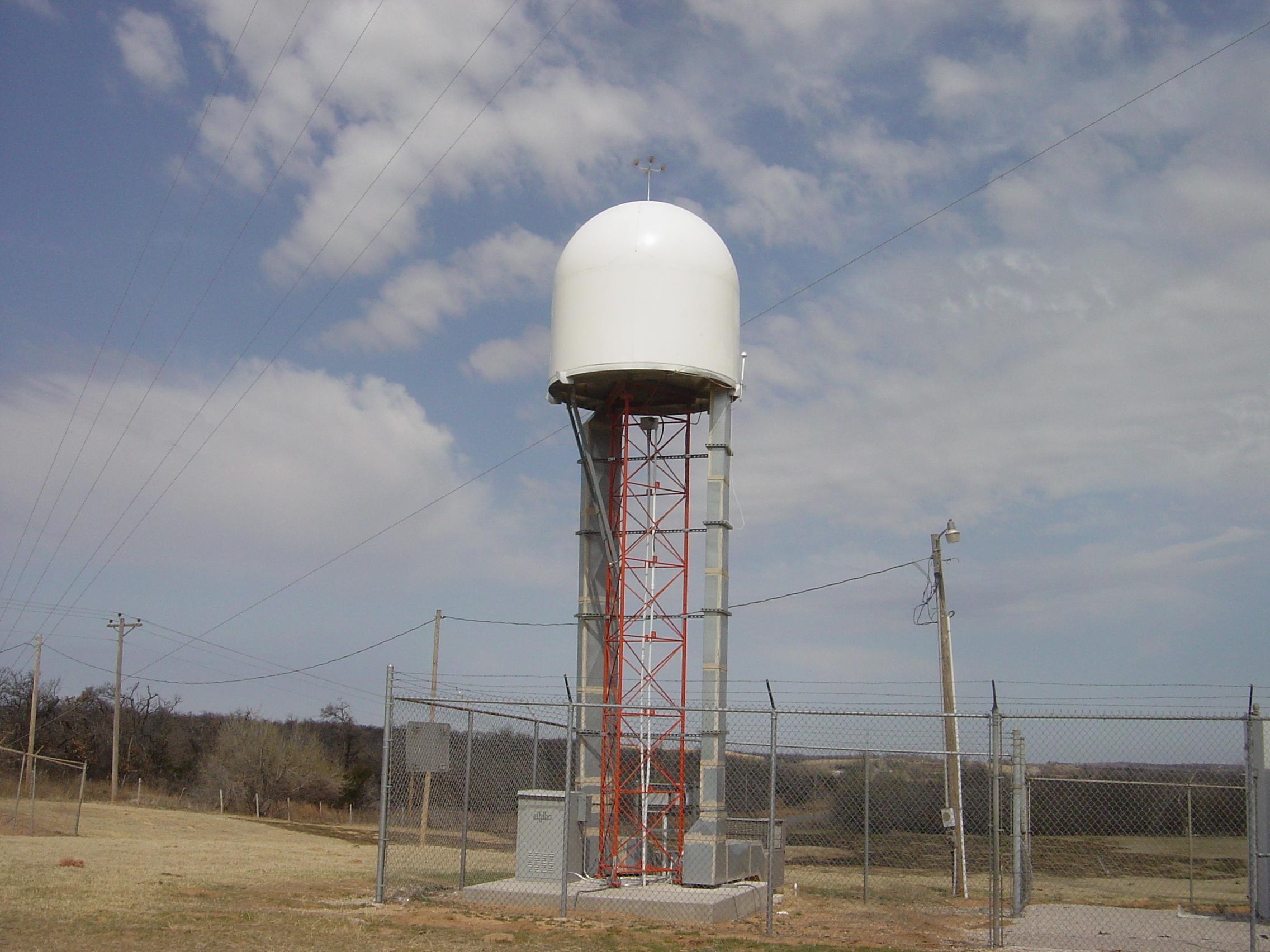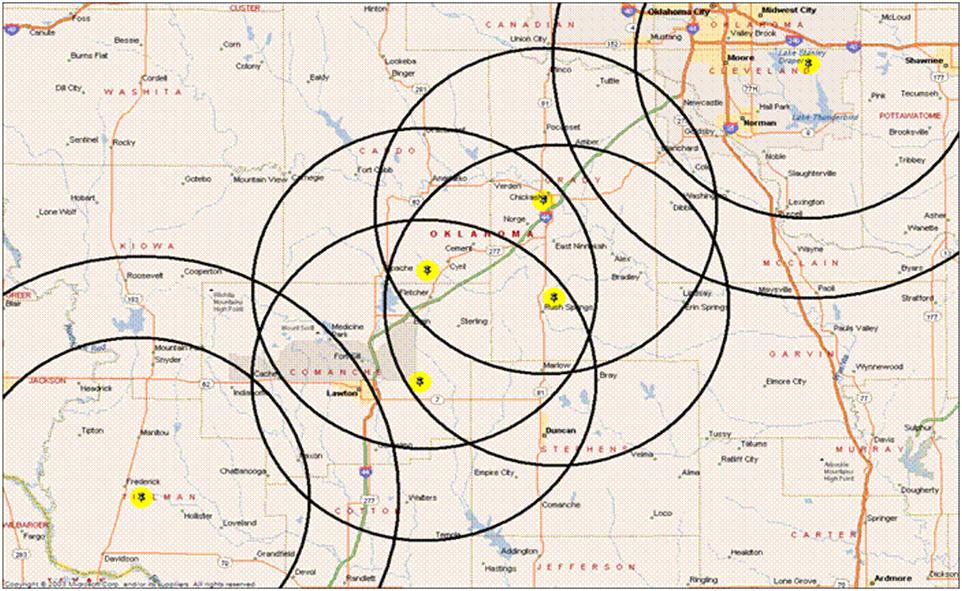Oklahoma Test Bed
CASA's fundamental technology and systems-level research were evaluated in a prototype system-level test bed located in southwestern Oklahoma from 2005 to 2011. CASA operated 4 dual-pol, multi-Doppler radars where high resolution observations, derived products and forecasts were disseminated in real time to off-duty NWS forecasters and on-duty local emergency managers for evaluation and decision making. This proof-of-concept test bed demonstrated networked X-band radar engineering and meteorology (Junyent and Chandrasekar 2009, McLaughlin et al. 2007); user-responsive networked system architecture (Zink et al. 2010; Pepyne et al. 2008; Philips et al. 2008); precipitation estimation (Wang and Chandrasekar 2010); nowcasting, real-time analysis and numerical weather prediction (Brewster et al. 2005; Hu et al. 2006; Brotzge et al. 2010; Brewster et al. 2010) integrated warning systems and decision making (Philips et al. 2010; Bass et al. 2011; League et al. 2010), and societal vulnerability and public response to weather information (Donner 2007; Trainor 2011). These all came together in an integrated system when on May 24, 2011 an emergency manager using CASA data made life saving decisions as an EF4 tornado with estimated peak winds of 190 mph approached his city (BostonGlobe.com 2011, Philips et al. 2012).
 
(Left) Image showing one of 4 installations in Oklahoma (Right) Map showing locations of 4 CASA radars relative to the WSR-88D radars.
The CASA 4 node test bed in Oklahoma was decommissioned in September 2011 and the radars were relocated to the Dallas Fort Worth Metroplex to support the CASA Urban Test Bed project.
|